electronics-journal.com
21
'20
Written on Modified on
Technology report
One for everything - DRT 25C dynamic reference diffuse sensor with innovative CAT technology.
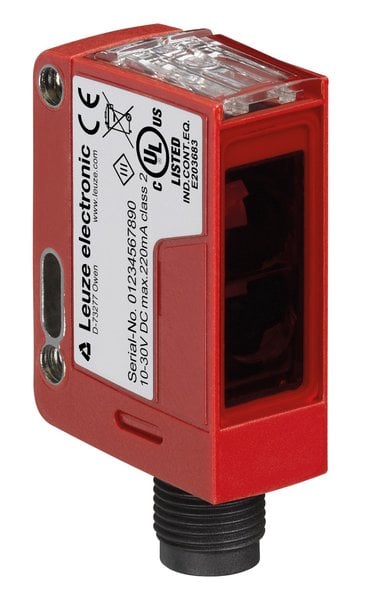
With the DRT 25C dynamic reference diffuse sensor, Leuze has brought a new operating principle to the market in the area of optical sensors. At the heart of the invention is the innovative CAT technology, which transforms a simple diffuse sensor into a highly intelligent device. This can be seen in the DRT 25C's clever mode of operation: it is taught in on a reference surface at the press of a button which allows it to reliably detect nearly every object – independent of shape, color and surface structure. The reference surface can be a machine wall, a piece of sheet metal, or even a vibrating, moving conveyor belt. This makes the sensor particularly well suited for use in packaging systems, especially in the area of confectionery and baked goods. No readjustment is necessary when changing objects.
Leuze developed its first optical sensor almost 60 years ago. Numerous technological milestones and innovations have followed since then. The more than 1,200 Sensor People worldwide view themselves as forerunners for their customers. Leuze has registered more than 200 patents in the last 10 years alone. This all with the goal of ensuring the lasting success of their customers in an industry that is ever evolving. Not only do the Sensor People have decades of experience but also in-depth application know-how in their specific focus industries. One of these is the packaging industry, which, with throughputs of several hundred thousand products per day and finely tuned process steps, places extremely high demands on the optical sensors. Clear-glass retro-reflective photoelectric sensors require less maintenance through smart tracking. Thanks to line-shaped light spots, laser diffuse sensors detect objects – no matter how complex – on their front edge. Extremely powerful through-beam photoelectric sensors detect the chocolate bar in its outer packaging with completely harmless infrared light. The intelligent CAT technology, which the new DRT 25C dynamic reference diffuse sensor uses, continues the idea of the clever sensor.
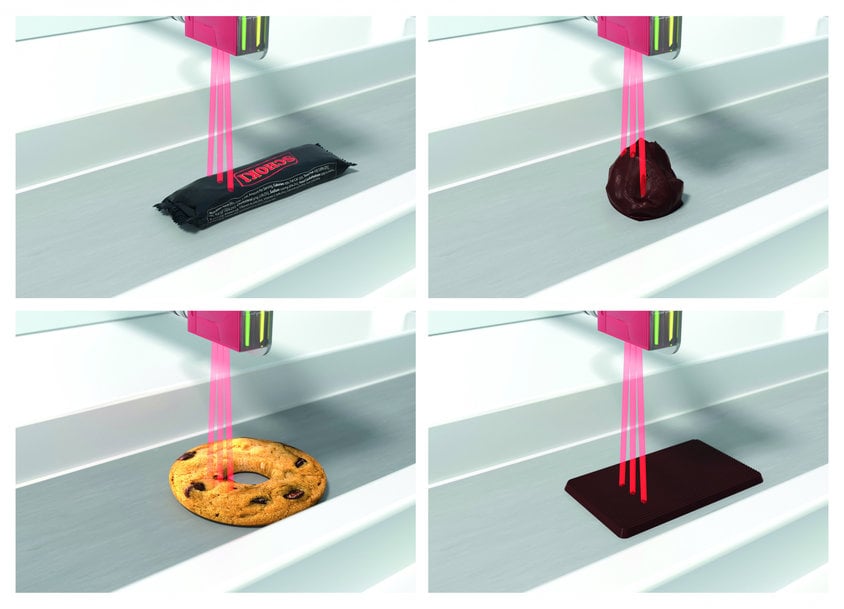
The DRT 25C reliably detects the front edges of the objects, ensuring smooth processes and no machine downtime. The wide scanning range detects all types of products, even those with complex geometries.
Our goal: detection on a running conveyor belt
Packaging and the objects to be packaged vary widely in color, shape and surface structure: flat, glossy, transparent, with gaps or holes – the entire spectrum. As a result, they are not so easy to detect. However, that is the task of optical sensors in packaging systems. The challenge in object detection is in detecting as quickly and reliably as possible and ideally directly from above. At the same time, the working environment poses a challenge as well: the objects that are to be detected are usually on conveyor belts that move and vibrate and which may become soiled or wet. The sensor solutions currently on the market have so far only been able to perform this task to a limited extent. Thus, there was a need for precisely such an intelligent model.
CAT technology: Contrast Adaptive Teach
This market requirement led to the development of the CAT technology at Leuze. CAT stands for Contrast Adaptive Teach. The underlying idea is simple: if the object can change at any time, use its environment instead as a constant reference surface. In packaging systems, this is the conveyor belt. This serves as a teachable reference. Once the sensor has been taught the contrast information of the conveyor belt, it only needs to be intelligent enough to adapt this knowledge to a possible change of environment.
This is precisely what CAT technology does.
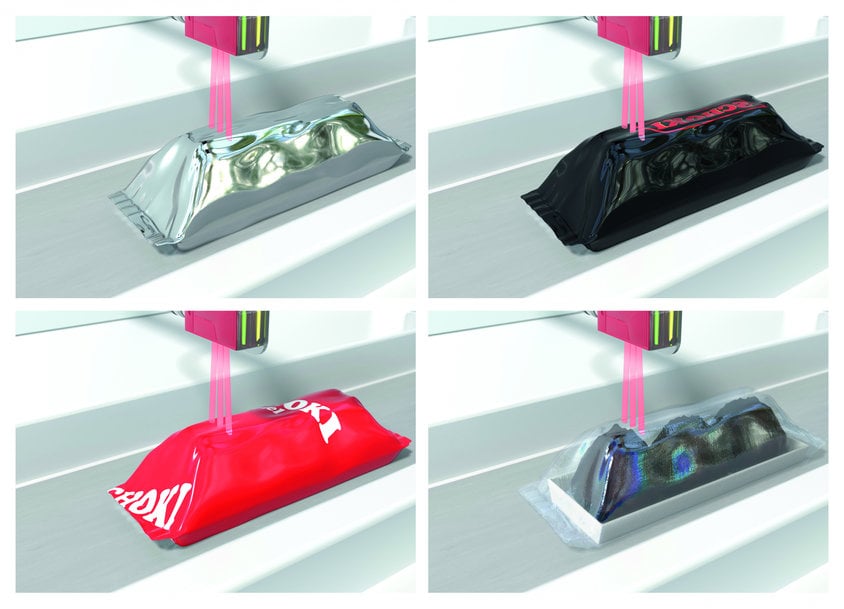
From transparent to high-gloss: The reference technology enables the detection of packaging with a wide range of colors and transparency as a "deviation" from the conveyor belt surface.
Operating principle of dynamic reference diffuse sensors
The new DRT 25C dynamic reference diffuse sensor uses the CAT technology in a new operating principle: it learns the signal parameters of the conveyor belt at the press of a button and stores them as the "standard zero." Every object that is transported on the conveyor belt now generates a signal. If this deviates from the zero state, the DRT 25C reliably detects the object as a "deviation from the reference." The performance of the device is optimized through the choice of teach level. There is, for example, a teach routine for conveyor belts that become heavily soiled over time. Another teach level exists especially for the detection of very flat or even transparent objects. Once the sensor has been "taught," no additional settings or readjustments are necessary. Not even if the object is changed, as the sensor operates together with the conveyor belt as a reference.
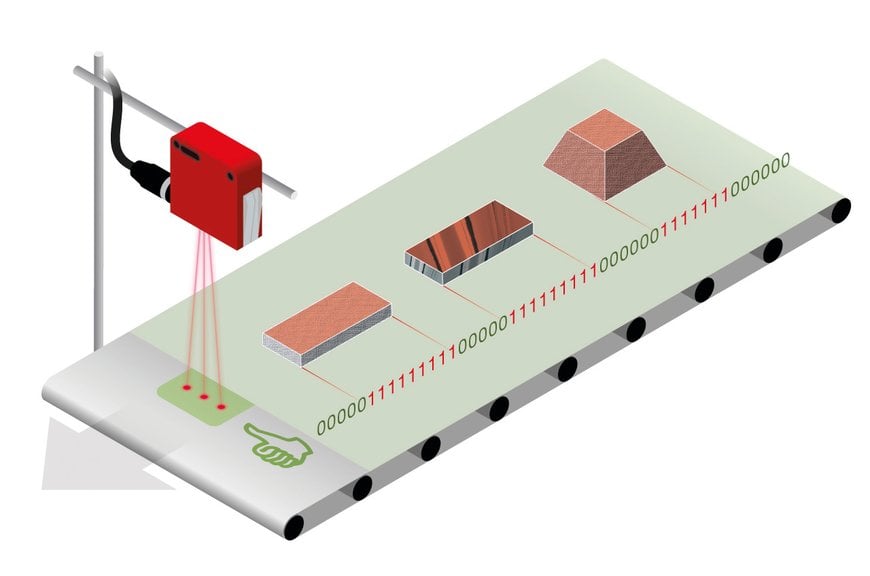
The DRT 25C works with the conveyor belt surface as a dynamic reference for the detection of objects. This is how the sensor reliably detects all objects that do not correspond to the belt surface, even in the case of contamination and vibration of the conveyor belt.
Reliable detection increases the throughput
If, for example, a chocolate bar is not reliably detected, a failure quickly occurs in the subsequent, precisely cycled packaging, which must then first be removed and cleaned. The more reliably the sensor detects the product, the less frequent unplanned maintenance needs to be performed. Herein lies the strength of the DRT 25C dynamic reference diffuse sensor, which operates reliably even with difficult shapes and surfaces. This increases the machine throughput, the production quantity and avoids downtime. Because no adjustment work needs to be performed on the sensor when changing products or changing the packaging materials, setup time is also reduced, further increasing output quantities. Up to now, a format change – such as from the classic 100 g bar of chocolate to a mini chocolate cube – meant that sensors had to be readjusted. However, because the DRT 25C uses the conveyor belt as a reference, this is no longer necessary. Even if the color, height or contour of the packaging changes, no settings need to be made at all on the dynamic reference diffuse sensor.
The all-rounder based on CAT technology
The DRT25C dynamic reference diffuse sensor represents a new operating principle that is based on the new intelligent CAT technology. It thereby sets new technological standards on the market and is another milestone in the innovation history of Leuze. Once again as forerunners, the Sensor People thereby precisely meet their customers' requirements for reliable detection and make them successful in an industry that is ever evolving. After all, the success of their customers is their aspiration and goal. Reduced downtimes, increased machine throughput as well as higher production quantities, all with maximum flexibility without readjustment when changing objects – that means increased cost effectiveness for their customers.
www.leuze.com/drt25c
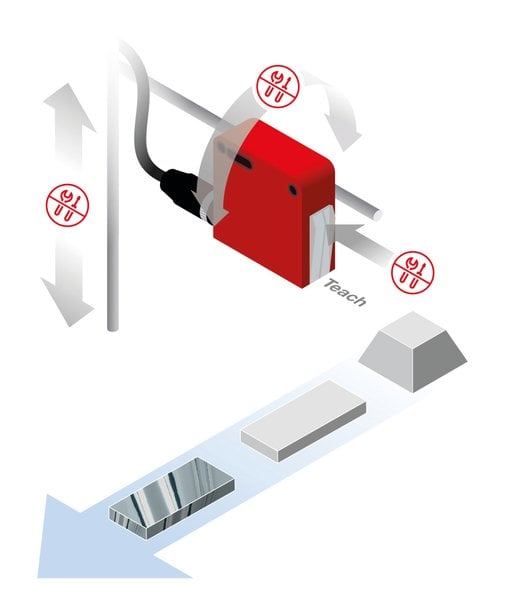
The teach button is used to teach-in the belt surface during the initial setup of the sensor. This means no additional setup time is required when changing products or packaging materials.

